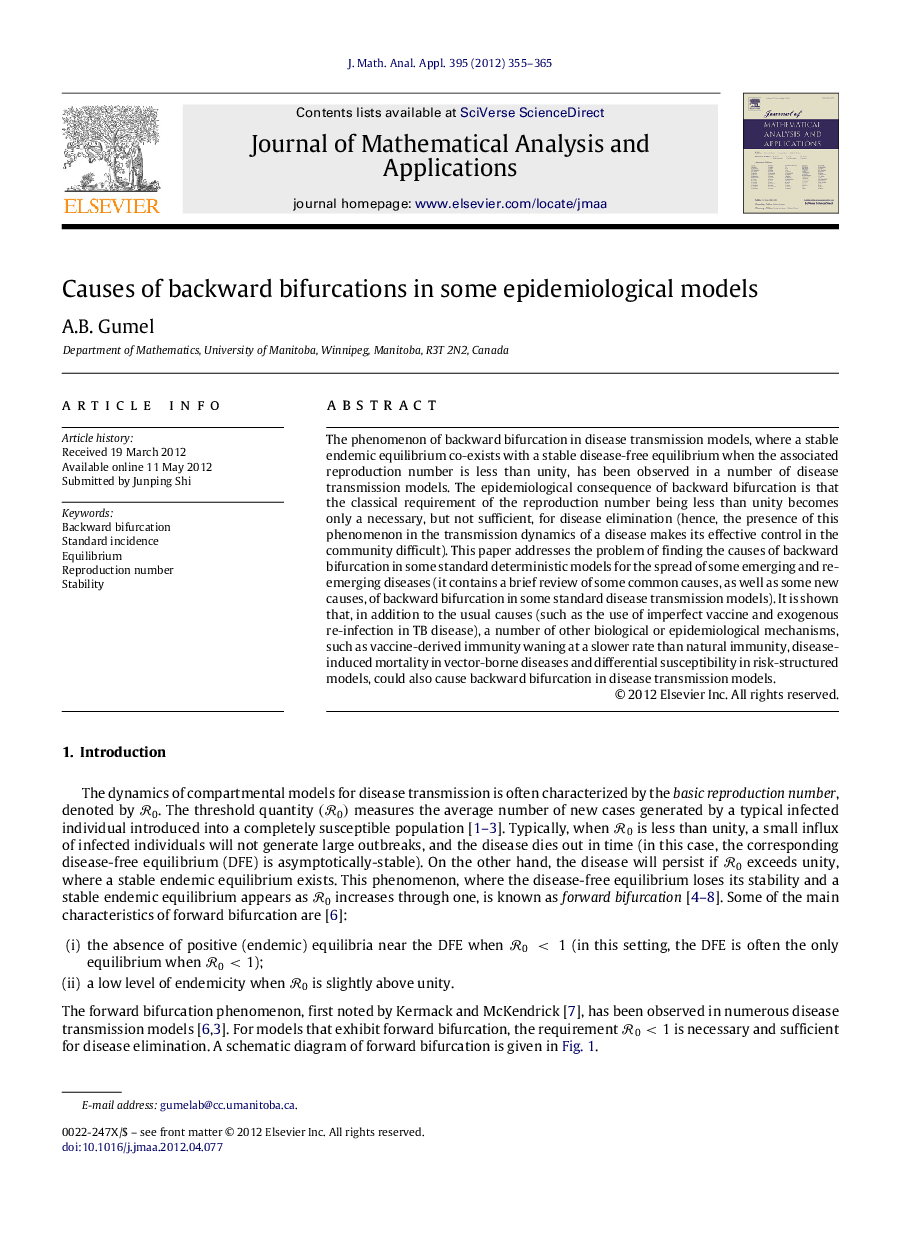| Article ID | Journal | Published Year | Pages | File Type |
|---|---|---|---|---|
| 6419240 | Journal of Mathematical Analysis and Applications | 2012 | 11 Pages |
The phenomenon of backward bifurcation in disease transmission models, where a stable endemic equilibrium co-exists with a stable disease-free equilibrium when the associated reproduction number is less than unity, has been observed in a number of disease transmission models. The epidemiological consequence of backward bifurcation is that the classical requirement of the reproduction number being less than unity becomes only a necessary, but not sufficient, for disease elimination (hence, the presence of this phenomenon in the transmission dynamics of a disease makes its effective control in the community difficult). This paper addresses the problem of finding the causes of backward bifurcation in some standard deterministic models for the spread of some emerging and re-emerging diseases (it contains a brief review of some common causes, as well as some new causes, of backward bifurcation in some standard disease transmission models). It is shown that, in addition to the usual causes (such as the use of imperfect vaccine and exogenous re-infection in TB disease), a number of other biological or epidemiological mechanisms, such as vaccine-derived immunity waning at a slower rate than natural immunity, disease-induced mortality in vector-borne diseases and differential susceptibility in risk-structured models, could also cause backward bifurcation in disease transmission models.
